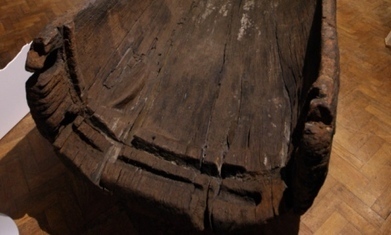First farmers on the Polish Lowland
The transition to farming on the Polish Lowland, which is a part of the North European Plain, was a complex process lasting over a millennium. This is partly due to the diversity of the landscapes (Figure 1) from the Pomerania Lakeland to the north with its rolling glacial hills and the south with the flat monotonous Great Poland Lowland Plain. The largest area is covered by a light sandy soil, however, in some regions heavy, fertile mollic gleysols formed over a clay subsoil can be found; comparable to the fertile loess-based soils prevailing in the uplands of southern Poland.
The Early Neolithic long house
The LBK long house is a rectangular post-built dwelling with a pitched roof structure, which rests its weight on three rows of posts along the its axis (Figure 2). The side walls are created by a row of more densely spaced external posts sunk to a shallower depth than the weight bearing posts. In the eastern part of the LBK distribution area, including Kuyavia, there is as yet no record of foundation trenches in the buildings, which is a more common feature to the west.
The length of these long houses varies from 12 to 40 plus metres, though the average is about 20 metres. The width is more standardised, ranging from between 5 to 8 metres.






















